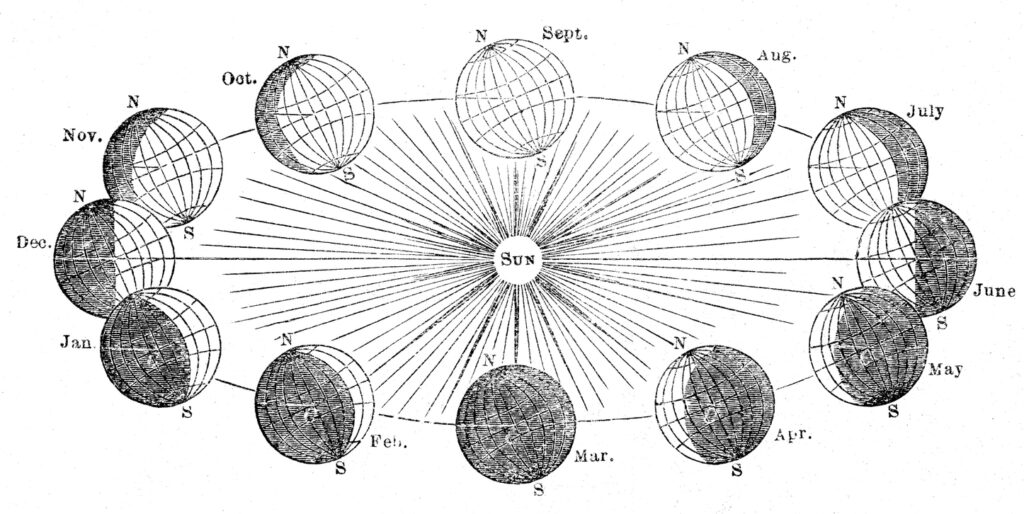The onset of winter weather varies from year to year and from place to place, but December 21, the winter solstice, is considered the first official day of winter. The name “winter” comes from an old Germanic word meaning “time of water” and refers to the seasonal precipitation. The winter solstice marks the shortest day of the year. The days get longer as winter progresses. In the northern hemisphere, it also marks the day when the sun is furthest to the south. Winter lasts until the vernal, or spring equinox, March 19, 2024, thus marking the beginning of spring when day and night are equal in length.
Winter has long been immortalized in art, poetry, and song. For many of us, winter makes us think of frolicking on snowy days and reading by the fire on cold nights—even if we live in a warm place where it never snows! Brainstorm with your students about the words and images that come to mind when they think of winter. How do these words and images compare to their own experiences with winter weather? View this post from the Library of Congress for additional ideas.
Have students select and read a picture book about winter. How do the words and images in the book compare to the list they brainstormed and to their own experiences? Students can use the interactive Venn diagram from ReadWriteThink.org to make the comparison.
As students read, ask them to look for examples of winter activities that the characters do with their families or friends. Were there any winter traditions on the list students brainstormed? Challenge your students to celebrate what winter means to them by starting their own tradition on the first day of winter.
Older students can read texts such as “A Winter Walk” by Henry David Thoreau. This piece describes a winter landscape.
The Academy of American Poets shares both the poem “Toward the Winter Solstice” by Timothy Steele as well as this activity from “Teach This Poem.”
How will you mark the start of winter?
Lisa Fink is an NCTE staff member, a former elementary school teacher, and a current university instructor at the University of Illinois, Urbana-Champaign. She can be reached on Twitter @fink_girl.
Curious about the NCTE and Library of Congress connection? Through a grant announced by NCTE Executive Director Emily Kirkpatrick, NCTE is engaged in ongoing work with the Library of Congress, and “will connect the ELA community with the Library of Congress to expand the use of primary sources in teaching.” Stay tuned for more throughout the year!
It is the policy of NCTE in all publications, including the Literacy & NCTE blog, to provide a forum for the open discussion of ideas concerning the content and the teaching of English and the language arts. Publicity accorded to any particular point of view does not imply endorsement by the Executive Committee, the Board of Directors, the staff, or the membership at large, except in announcements of policy, where such endorsement is clearly specified.

